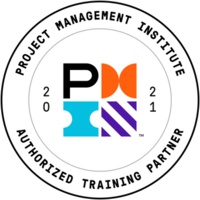
Aprende en Comunidad
Avalados por :





¡Acceso SAP S/4HANA desde $100!
Acceso a SAPThe Advantages of Implementing SAP Healthcare Solutions for Integrated Healthcare Systems
- Creado 01/03/2024
- Modificado 01/03/2024
- 160 Vistas
0
Cargando...
The Innovation of SAP in the Healthcare Industry
Healthcare delivery is increasingly becoming more organized, patient-centered, and dependent on collaborative efforts. Healthcare organizations are emphasizing cost-cutting strategies and technology to expand their operations and gather and utilize financial and clinical data to improve performance and quality.
The collecting and transfer of data in a manner that is both effective and efficient would be of immense advantage to the healthcare business. It is possible to cut costs, speed up workflows, and improve patient care by digitally modeling administrative, nursing, and medical responsibilities using information technology solutions.
Factors for Integrating Healthcare System
The healthcare industry as a whole is experiencing a change toward new methods of care delivery and funding as a response to the myriad issues that are currently being faced by healthcare executives all over the world. The following are the forces at play:
- Government healthcare
- Personalized, collaborative, evidence-based, outcome-driven, integrated healthcare improvements.
- Patients want automation and quick info.
- Standard, payer, and patient choice changes
A Roadmap for the Implementation of IT Solutions for Healthcare Providers
The healthcare software development companies in USA market use an ever-expanding variety of product classifications. The solution map describes the broad categories of potential solutions, including particular ones. The foundational, corporate, and institutional administrations, the revenue cycle, core care delivery, ancillary care delivery, and mobility are some of the areas that fall under this category.
The Application of Information Technology to the Healthcare Industry
In modern times, healthcare has become increasingly centralized and provider-focused. In the future, the patient will be the focal point of both the therapy and the organization, and the emphasis will be placed on the person.
In addition, using digital communication and instruments for remote monitoring will make it possible to treat patients in the comfort of their homes, resulting in lower healthcare expenditures and better overall living circumstances.
Healthcare practitioners who presently work alone and store patient data in separate local IT systems are expected to collaborate and share their knowledge and insights more regularly. In the distant future, diagnostic procedures such as tests and examinations will be rendered obsolete thanks to the smooth exchange of data and the establishment of secure direct connections between patients and medical experts.
The Benefits of SAP in the Healthcare Industry
The SAP solution for healthcare could be helpful in situations like these. This is where the problem's solutions come into play. The delivery of individualized treatment that is also efficient in terms of cost is made possible by SAP Healthcare Solutions, which also improves patient care.
SAP solutions are designed to address electronic medical records (EMR), healthcare analytics, and health information exchange (HIE). The implementation of cutting-edge technologies paves the way for the creation of effective information systems, the delivery of care that is evidence-based, and an improvement in the quality of life for patients in general.
The all-encompassing solutions offered by SAP for the healthcare industry provide high-quality care and a personalized patient experience while achieving operational excellence.
The integration of horizontal business lines into on-premises, cloud-based, and mobile healthcare solutions is how SAP systems facilitate process integration in the healthcare industry.
SAP systems make it easier for patients and healthcare professionals to share information, enable real-time access to relevant data at the point of care, and provide comprehensive visibility and transparency for operational support.
These are helpful to customers in many ways:
- Patients may be provided with a more personalized healthcare experience if the data about patient access, billing, and clinical care are combined.
- Manage patients' health outside hospitals through cooperative efforts involving patients and medical personnel.
- In healthcare analytics, using cutting-edge analytical approaches to provide insights for improved research and results requires advanced analytical techniques
Pedro Pascal
Se unió el 07/03/2018
Facebook
Twitter
Pinterest
Telegram
Linkedin
Whatsapp
Sin respuestas
 No hay respuestas para mostrar
Se el primero en responder
No hay respuestas para mostrar
Se el primero en responder
© 2025 Copyright. Todos los derechos reservados.
Desarrollado por Prime Institute
Hola ¿Puedo ayudarte?


